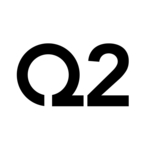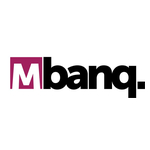Global Enterprise Resource Planning Market to Reach $71.97 Billion by 2027, Driven by Advancements in Cloud Deployments and Post-COVID Expansion
Enterprise Resource Planning Market Global Enterprise Resource Planning Market Growth Rate By Region
Dublin, July 04, 2023 (GLOBE NEWSWIRE) — The “ERP Software Market – Growth, Trends, COVID-19 Impact, and Forecasts (2023 – 2028)” report has been added to ResearchAndMarkets.com’s offering.
The global enterprise resource planning (ERP) market, valued at USD 45.11 billion in the current year, is projected to grow to USD 71.97 billion by 2027, with a compound annual growth rate (CAGR) of 7.92% during the forecast period.
ERP facilitates the integration and management of key business activities, leveraging real-time software and technological advancements. It enables organizations to gather, store, organize, and evaluate data from various business processes, making it an essential tool for efficient business management.
Companies Mentioned
- SAP SE
- Oracle Corporation
- Microsoft Corporation
- Deacom Inc.
- SYSPRO (Pty) Ltd
- Plex Systems Inc. (Rockwell Automation Inc.)
- FinancialForce.com Inc.
- Infor Inc. (Koch Industries)
- Epicor Software Corporation
- IBM Corporation
- The Sage Group PLC
- Dassault Systemes SE
- Deltek Inc.
Key Highlights:
- Rising demand for supplier-relationship management and customer-relationship management, coupled with the need for cloud-based ERP platforms, is driving the market’s growth.
- Adoption of innovative technologies, advancement of existing ERP systems, enhanced security measures, and improved financial systems are contributing to the increasing demand for ERP software, particularly cloud-based solutions.
- Real-time analytics provided by ERP enable businesses to identify growth markets and products, enhance analytical insights, reduce costs, and centralize operations for improved profitability.
- Customization issues pose a challenge to the global ERP market, with over-customization leading to complexity and implementation failures.
- ERP software played a vital role during the COVID-19 pandemic, helping companies overcome challenges in cost analysis, supply chain management, finance planning, procurement, and other aspects of business operations. Post-pandemic, the expansion of enterprises and their reliance on ERP software contribute to the overall market growth.
Enterprise Resource Planning Market Trends:
Cloud Deployments to Witness Highest Market Growth:
- Cloud-based ERP solutions, such as Software-as-a-Service (SaaS), offer cost benefits to both small and large enterprises. These solutions are installed on remote servers provided by vendors, resulting in faster deployment, lower upfront costs, easy customization and maintenance, automatic data backup and disaster recovery, and seamless integration and migration.
- Cloud ERP solutions are categorized as single-tenant and multi-tenant, with the latter offering shared software platforms and hardware upgrades managed by vendors. Growing digital transformation across various industries has led to increased adoption of cloud ERP, with vendors introducing new solutions and forming strategic collaborations to meet market demand.
- Examples of recent collaborations include the partnership between AWS and BMW Group to develop customizable cloud ERP software for managing data from connected vehicles, and the collaboration between Xero and Cogo to help small businesses understand and reduce their carbon footprint.
North America to Hold Major Market Share:
- North America dominates the ERP software market, driven by the need for digital automation, cloud computing, economic growth, and market expansion. Prominent players in the region continuously launch new products and partnerships to cater to end-user demands.
- The region’s digital transformation across various industries, such as manufacturing, distribution, and healthcare, fuels the adoption of ERP solutions. The United States, in particular, has a high adoption rate of cloud ERP among mid-sized businesses, and manufacturers prioritize cloud ERP as a central investment strategy.
- Canada has successfully implemented ERP solutions in industries like hospitality, manufacturing, and corporate landscapes, enhancing productivity and collaboration. The region’s small and medium enterprises are increasingly adopting new technologies, driven by the pandemic’s impact.
Key Topics Covered:
1 INTRODUCTION
2 RESEARCH METHODOLOGY
3 EXECUTIVE SUMMARY
4 MARKET INSIGHT
4.1 Market Overview
4.2 Industry Value Chain Analysis
4.3 Industry Attractiveness – Porter’s Five Forces Analysis
4.4 Assessment of Impact of COVID-19 on the Industry
5 MARKET DYNAMICS
5.1 Market Drivers
5.1.1 Increased Adoption of ERP Solutions for Better Management
5.1.2 Real-time Data Analytics
5.2 Market Challenges
5.2.1 Difficulties in Customization According to Business Needs
6 MARKET SEGMENTATION
6.1 By Deployment
6.1.1 On-premise
6.1.2 Hybrid
6.2 By End-user Industry
6.2.1 Retail
6.2.2 Manufacturing
6.2.3 BFSI
6.2.4 Government
6.2.5 Telecom
6.2.6 Military and Defense
6.2.7 Healthcare
6.2.8 Other End-user Industries
6.3 By Organization Size
6.3.1 Small and Medium Enterprises
6.3.2 Large Enterprises
6.4 By Geography
7 COMPETITIVE LANDSCAPE
7.1 Company Profiles
8 INVESTMENT ANALYSIS
9 MARKET OPPORTUNITIES AND FUTURE TRENDS
For more information about this report visit https://www.researchandmarkets.com/r/o5wval
About ResearchAndMarkets.com
ResearchAndMarkets.com is the world’s leading source for international market research reports and market data. We provide you with the latest data on international and regional markets, key industries, the top companies, new products and the latest trends.
Attachment
- Enterprise Resource Planning Market Global Enterprise Resource Planning Market Growth Rate By Region
CONTACT:
CONTACT: ResearchAndMarkets.com
Laura Wood,Senior Press Manager
[email protected]
For E.S.T Office Hours Call 1-917-300-0470
For U.S./ CAN Toll Free Call 1-800-526-8630
For GMT Office Hours Call +353-1-416-8900





































